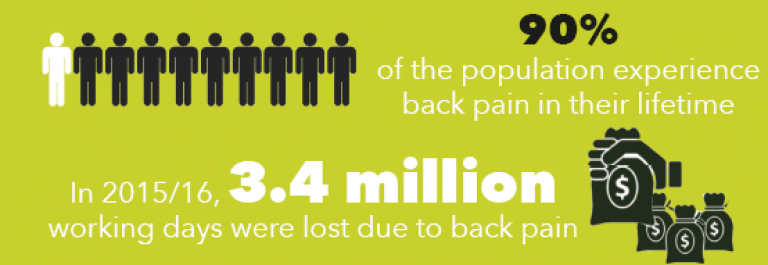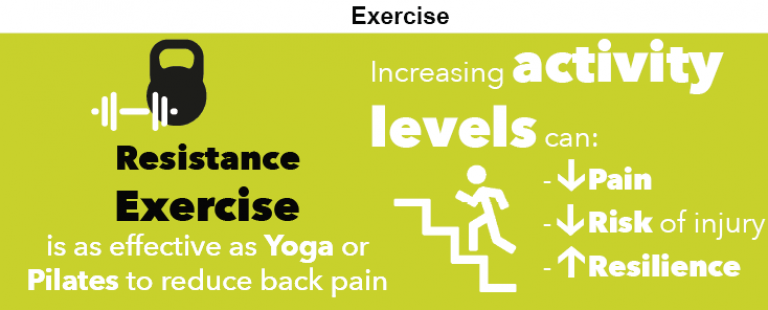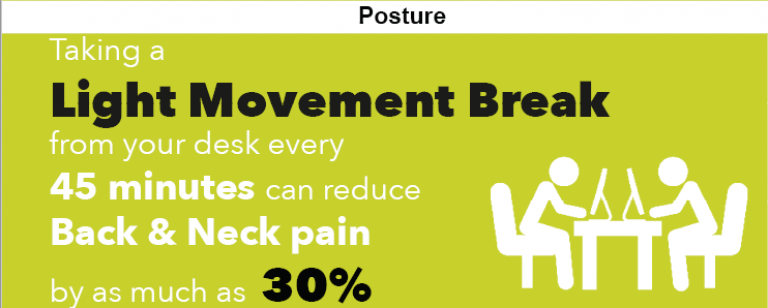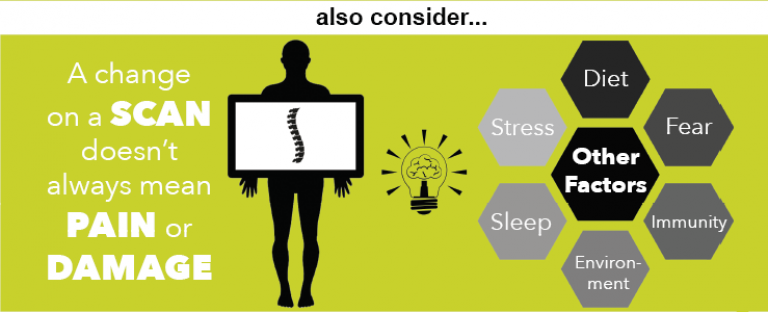Back pain is the number one cause of musculoskeletal disorder (MSD), what can you do to reduce your risks of suffering with back pain?
Roadmap to a better back

1. Early advice
When pain starts, speak to your GP or a Health Professional to know the best steps to take. There is a lot of information on the internet, but this can often be difficult to interpret and can create more uncertainty than solving problems.
2. General movement
It is important early on to stay active, even if movement is uncomfortable. We are a long way from days of “2 weeks bed rest” as treatment back pain and this has actually shown worsened prognosis. Do this by maintaining gentle functional movement through walking, light stretches or staying active at work or around the house. You may find that if you work a desk job, sitting for longer periods may prove uncomfortable but combat this by taking routine posture breaks from your workstation.

3. Stress management
CBT and relaxation techniques including mindfulness may assist in managing back pain. It is widely accepted that mental wellbeing can contribute to pain and MSD’s. Having good stress management strategies in place to cope with the rigours of modern life and the burden of back pain is critical for making sure that your symptoms don’t become persistent. Breathing exercises, mindful walks, learning a new hobby and socialising with friends are all great for improving or maintaining good mental wellbeing.

4. Improved sleep
A lack of sleep or poor sleep quality has been shown to contribute to the pain and discomfort of back pain. Sleep is the most restorative activity that we can do and it is one of the key pillars of wellbeing. It is during deep sleep that that body slips into healing mode and positively promotes inflammation and repair. Failing to get enough of the “Zzzzz’s” can prolong episodes of back pain as well as ‘increasing the volume’ of pain.

5. Specific exercises
Engaging in specific mobility and strengthening exercises can build the resilience to reduce the onset of back pain, but is also a key part of the management when you are in pain. There is no single best form of exercise with resistance training, yoga, pilates and aerobic exercise all proving popular and effective for improving wellbeing. The government guidelines recommend 30 minutes of general exercise, 5 days per week to maintain a healthy balance, but you should aim to do more specific maintenance exercises for at least 10 minutes per day and at a time that allows you to complete as part of a regular routine.
 Close
Close

